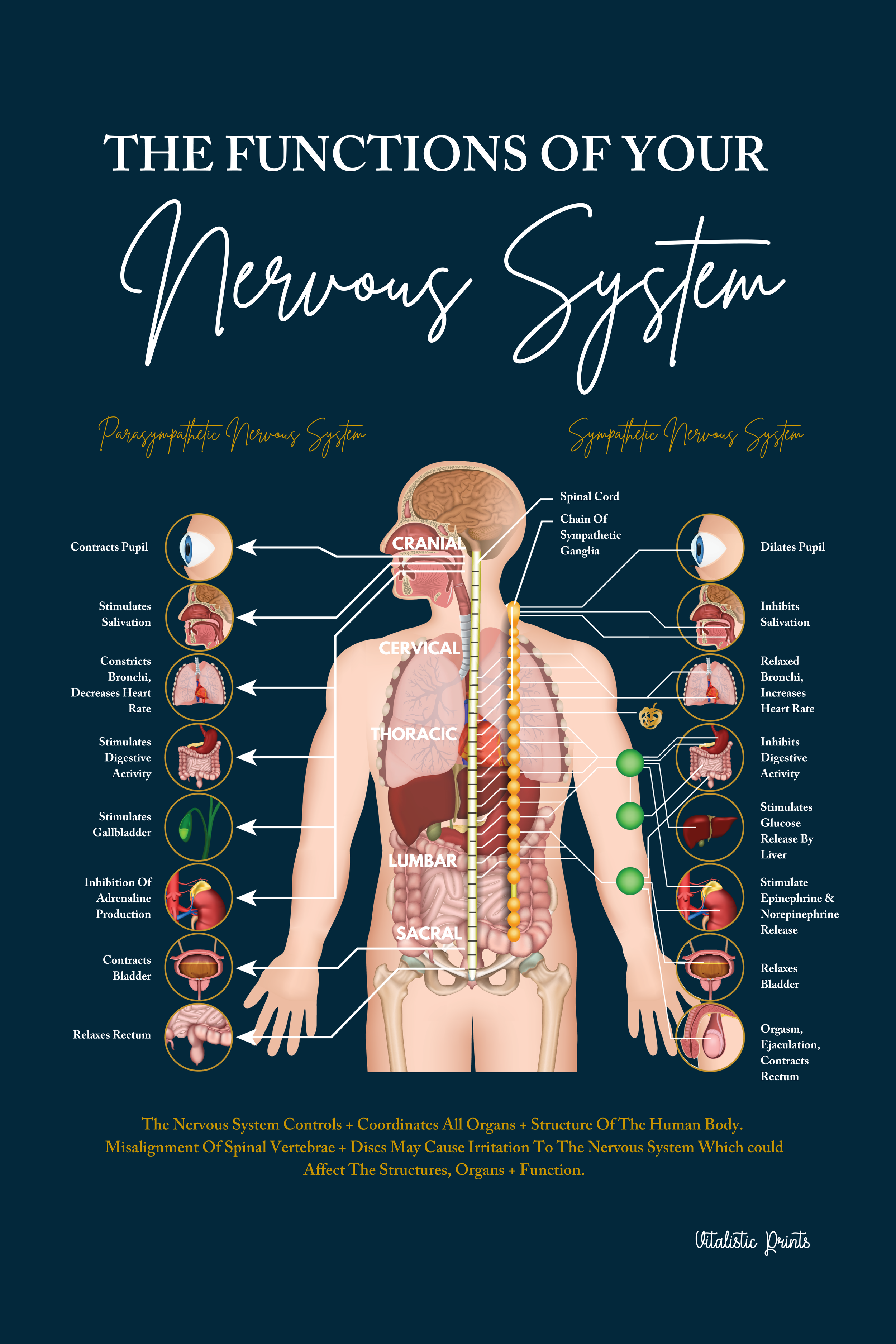The Relationship Between The Brain And Chiropractic Care
When a chiropractor adjusts your spine they change a part of the brain called the prefrontal cortex.
Pain Processing
The prefrontal cortex is known to get activated when the brain receives “new
pain” signals from the body and can control other parts of the brain to determine
the severity of pain. This is potentially why many people who suffer from certain
headaches, neck pain and back pain benefit from chiropractic care.
.
According to clinical research the prefrontal cortex is affected the most by negative mental stress which affects all the functions listed above. This is why when stressed it becomes difficult to think rationally. When the prefrontal cortex doesn’t function optimally it has an impact on your emotional health, mental health, immune system, endocrine system and autonomic system which can result in high levels of inflammation within the body.
What we know is how the spine moves has a remarkable impact on how the prefrontal cortex functions. This is potentially why many chiropractic benefits can include feeling better, improved sleep, and better overall functioning.
How Chiropractic Care Can Help
Chiropractic care is one of the least invasive but most effective treatments for tennis elbow. By ensuring that the spine is in its proper alignment it takes the pressure off the soft tissues that may be overworking due to the biomechanical changes that have taken place in the spine. This will help relax the muscles and take the pressure off the sciatic nerve which may help to alleviate pain.
What To Expect At Your First Chiropractic Visit
An initial Chiropractic exam for back pain will typically have three parts: a consultation, case history, and physical examination. Laboratory analysis and X-ray examination may be performed.
Consultation. The patient meets with the chiropractor and provides a brief synopsis of his or her lower back pain, such as:
Duration and frequency of symptoms
Description of the symptoms (e.g. burning, throbbing)
Areas of pain
What makes the pain feel better (e.g. sitting, stretching)
What makes the pain feel worse (e.g. standing, lifting).
Case history. The chiropractor identifies the area(s) of complaint and the nature of the back pain by asking questions and learning more about different areas of the patient's history, including:
Family history
Dietary habits
Past history of other treatments (chiropractic, osteopathic, medical and other)
Occupational history
Psychosocial history
Other areas to probe, often based on responses to above questions
Physical examination. A chiropractor may utilize a variety of methods to determine the spinal segments that require chiropractic treatments, including but not limited to static and motion palpation techniques determining spinal segments that are hypo mobile (restricted in their movement) or fixated. Depending on the results of the above examination, a chiropractor may use additional diagnostic tests, such as:
X-ray to locate subluxations (the altered position of the vertebra)
A device that detects the temperature of the skin in the paraspinal region to identify spinal areas with a significant temperature variance that requires manipulation.
Chiropractors are trained in a variety of methods to assess the underlying cause of the problem, including:
Evaluation and management services. Chiropractors are trained in examining the joints, bones, muscles and tendons of the spine, head, extremities and other areas of the body with the purpose of noting any misalignment, tenderness, asymmetry, defects or other problems.
Neurologic and other common physical examination procedures. Chiropractors are trained to perform a variety of neurologic tests (nerve root compression/tension, motor strength, coordination, deep tendon and pathological reflexes, etc.) and are skilled in performing orthopedic, cardiovascular and many other common examinations.
Specialised assessment. Chiropractors are trained to assess range of motion, stability, muscle strength, muscle tone and other assessments with the lower back.
Common diagnostic studies. Chiropractors are trained in use of diagnostic studies and tools such as radiography (X-rays), laboratory diagnostics and neurodiagnostics.
References
1. Haavik, Heidi, and Bernadette Murphy. "The role of spinal manipulation in addressing disordered sensorimotor integration and altered motor control." Journal of Electromyography and Kinesiology 22.5 (2012): 768-776. https://www.researchgate.net/publication/236051300_Short_term_modulation_of_trunk_neuromuscular_responses_following_spinal_manipulation_A_control_group_study
2. Navid, M. S., Lelic, D., Niazi, I. K., Holt, K., Mark, E. B., Drewes, A. M., & Haavik, H. (2019). The effects of chiropractic spinal manipulation on central processing of tonic pain-a pilot study using standardized low-resolution brain electromagnetic tomography (sLORETA). Scientific reports, 9(1), 1-12. https://www.nature.com/articles/s41598-019-42984-3
3. Haavik, H., Niazi, I. K., Holt, K., & Murphy, B. (2017). Effects of 12 weeks of chiropractic care on central integration of dual somatosensory input in chronic pain patients: a preliminary study. Journal of manipulative and physiological therapeutics, 40(3), 127-138. https://pubmed.ncbi.nlm.nih.gov/28196631/
4. Pochon, J. B., Levy, R., Poline, J. B., Crozier, S., Lehéricy, S., Pillon, B., ... & Dubois, B. (2001). The role of dorsolateral prefrontal cortex in the preparation of forthcoming actions: an fMRI study. Cerebral cortex, 11(3), 260-266. https://pubmed.ncbi.nlm.nih.gov/11230097/
5. Koechlin, E., & Summerfield, C. (2007). An information theoretical approach to prefrontal executive function. Trends in cognitive sciences, 11(6), 229-235. Arnsten, A. F., & Shansky, R. M. (2004). Adolescence: vulnerable period for stress‐induced prefrontal cortical function? Introduction to part IV. Annals of the New York Academy of Sciences, 1021(1), 143-147. https://pubmed.ncbi.nlm.nih.gov/17475536/
6. https://www.ncbi.nlm.nih.gov/pmc/articles/PMC3716373/
7. https://www.frontiersin.org/articles/10.3389/fpain.2021.765921/full
8. https://spineandposture.com/what-research-shows-about-the-effectiveness-of-chiropractic-care/
9. https://www.jmptonline.org/article/S0161-4754%2807%2900178-9/fulltext



